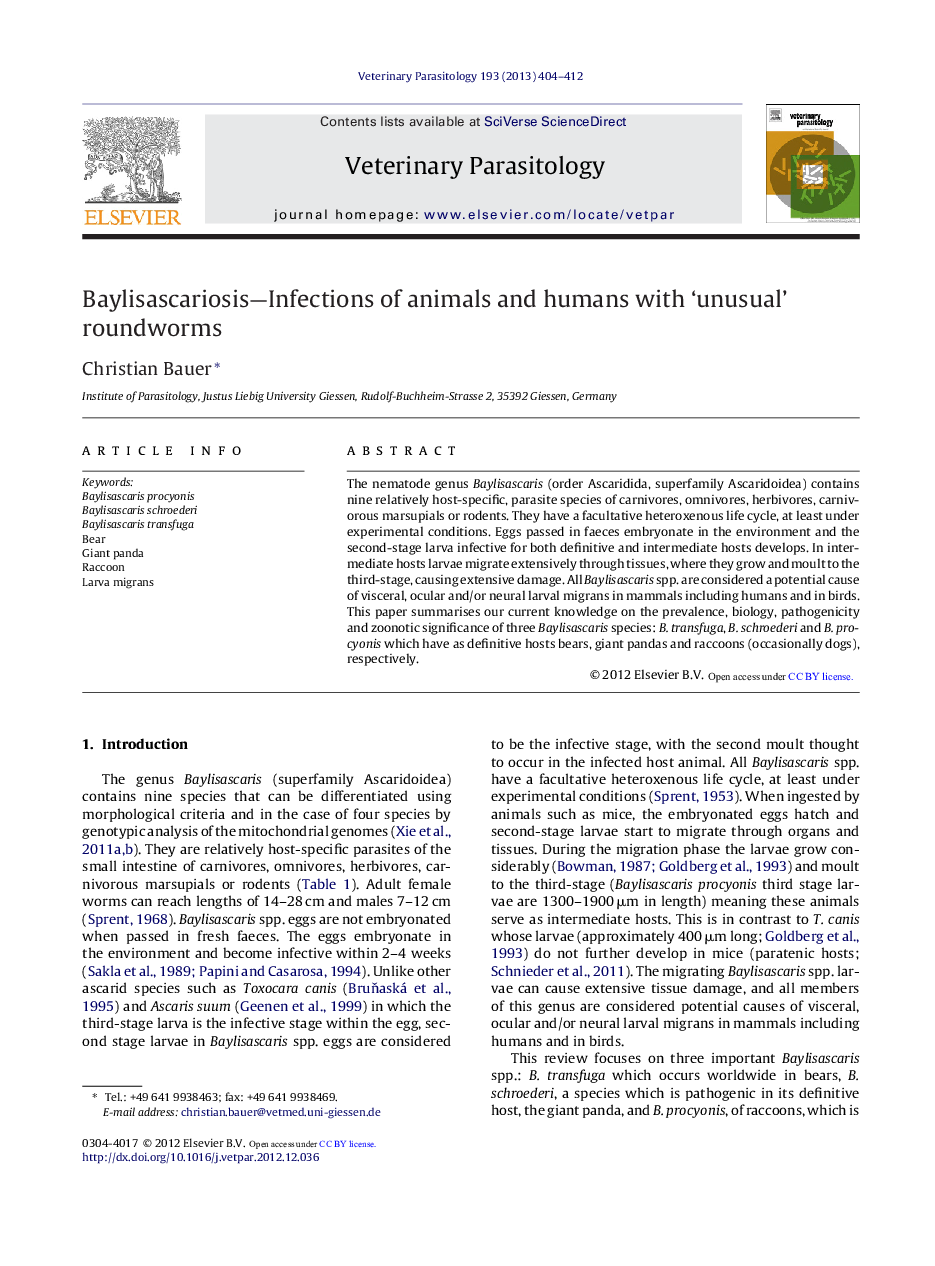| Article ID | Journal | Published Year | Pages | File Type |
|---|---|---|---|---|
| 2470046 | Veterinary Parasitology | 2013 | 9 Pages |
The nematode genus Baylisascaris (order Ascaridida, superfamily Ascaridoidea) contains nine relatively host-specific, parasite species of carnivores, omnivores, herbivores, carnivorous marsupials or rodents. They have a facultative heteroxenous life cycle, at least under experimental conditions. Eggs passed in faeces embryonate in the environment and the second-stage larva infective for both definitive and intermediate hosts develops. In intermediate hosts larvae migrate extensively through tissues, where they grow and moult to the third-stage, causing extensive damage. All Baylisascaris spp. are considered a potential cause of visceral, ocular and/or neural larval migrans in mammals including humans and in birds. This paper summarises our current knowledge on the prevalence, biology, pathogenicity and zoonotic significance of three Baylisascaris species: B. transfuga, B. schroederi and B. procyonis which have as definitive hosts bears, giant pandas and raccoons (occasionally dogs), respectively.
